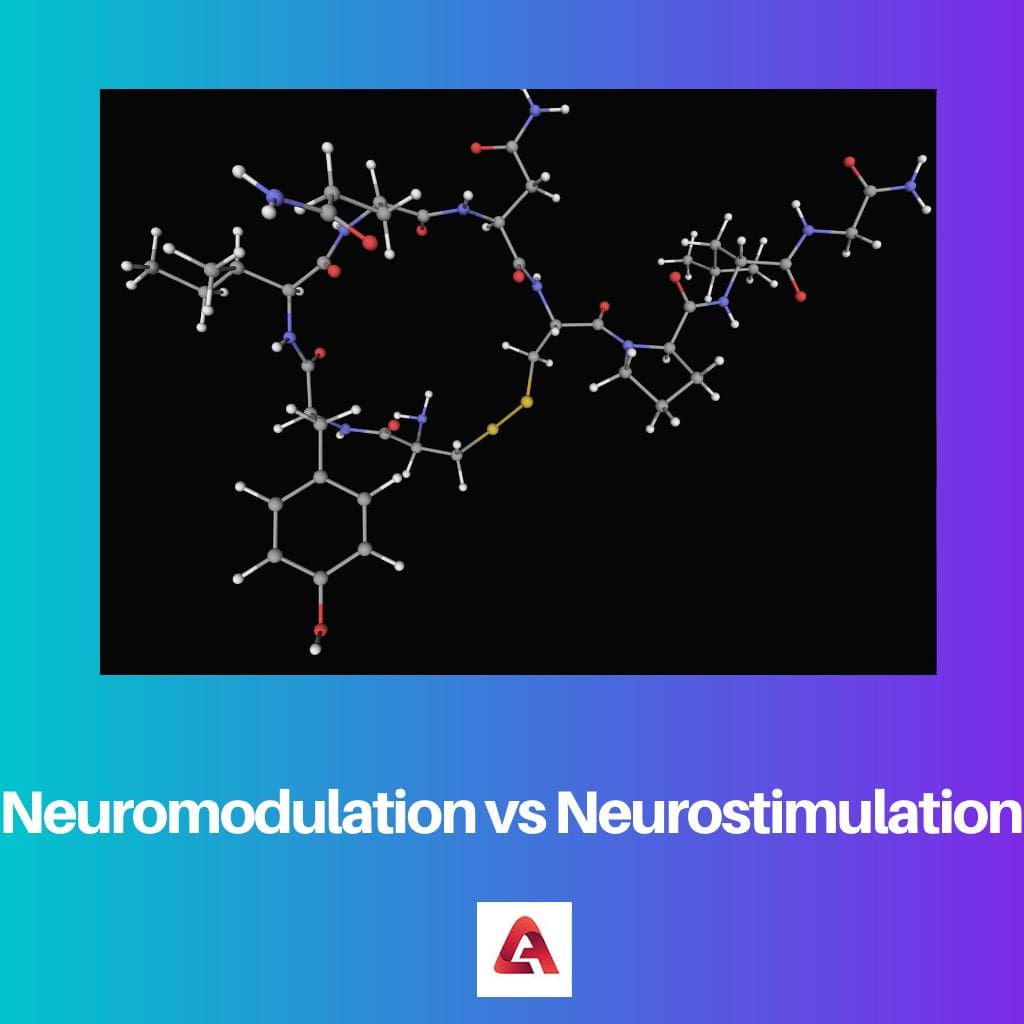Among many uncountable health issues that are beyond one’s ability to bear, pain is the biggest intractable condition of all. Since medical science has evolved tremendously over the centuries, the solutions to eliminate health issues or reduce them to their minimum have also advanced with time. Neuromodulation and Neurostimulation are two modern solutions for certain diseases in the human body.
Key Takeaways
- Neuromodulation alters nerve activity by delivering electrical or chemical signals, whereas neurostimulation directly stimulates nerves via electrical impulses.
- Neuromodulation affects various bodily functions, including pain relief and motor control, while neurostimulation primarily targets pain relief.
- Neuromodulation can be reversible or irreversible, but neurostimulation is always reversible.

Neuromodulation vs Neurostimulation
Neuromodulation is a pain treatment method that relieves pain through nerve stimulation and medicines. This method can also be used for various disorders treatments. In the neurostimulation pain treatment method, the brain and spinal cord are targeted to relieve the pain. Power sources like electric current are used in this treatment method.
Comparison Table
| Parameters of Comparison | Neuromodulation | Neurostimulation |
|---|---|---|
| Work method | Neuromodulation works by altering the nerves through electrodes or drugs. | Neurostimulation works by arousing the nerves through electrical currents. |
| Target site | Neuromodulation directly treats the target site through nerves. | Neurostimulation target the spinal cord or brain for treatment purposes. |
| Health concerns | Neuromodulation can cause bleeding and infections through the side effects of drugs. | Neurostimulation can only be a threat if the invasive type of stimulation is done. |
| Effect on nerves | Neuromodulation can stimulate the nerves as well as can inhibit them also. | Neurostimulation can only stimulate the nerves. |
| Safe Choice | Neuromodulation is a safer choice because invasive procedures can be avoided in some cases. | Neurostimulation can be dangerous because of the use of the invasive procedure. |
What is Neuromodulation?
Neuromodulation is a therapeutic procedure in which the nerves are either altered or inhibited through electrical, means, or drug infusions on the target site.
It is a combined science of mechanical, chemical, and electrical mediations to alter nervous system functions. It is a reversible, nondestructive procedure.
Neuromodulation is mistaken for the treatment of chronic pains only, but it can be a life-changing treatment for psychiatric disorders, epilepsy, and the treatment of dysfunctions like bladder or bowel.
Neuromodulation is also being examined for the treatment of urinary incontinence.
Other than the electrical or magnetic voltages, the drugs that are used in Neuromodulation treatment are dopamine, serotonin, histamine, nitric oxide, neuropeptides, acetylcholine, norepinephrine, and cannabinoids.
Investigations on Neuromodulation have been done for Alzheimer’s and recovery from stroke issues as well.
The demand for Neuromodulation in people is predicted to increase drastically since the effects are so promising and life-changing. Also, the advancement in technology is attracting more and more people with different health issues because who doesn’t want a healthy, stress-free life?
According to market research, it’s just the beginning of the Neuromodulation technique. Time will unfold a new horizon and world for humans to witness through this technique.
What is Neurostimulation?
Neurostimulation is a process in which the nerves are only aroused/stimulated by using low-voltage electrical or magnetic pulses for therapy.
This treatment procedure can be of two types majorly. Invasive; surgical implantation of electrodes in the body, or non-invasive, where the electrodes are connected to the skin only.
Neurostimulation is currently used to treat paralysis, loss of sense organs, and chronic pains. It also provides hearing aids, artificial limbs, or vision.
In Neurostimulation, the side effects do not include medication but infections from the invasive material used during the treatment. The possibility of these infections occurring is reducing with time as technology is emerging every day.
Since the reduction in the side effects of Neurostimulation is considered safer, adding to the fact that it is also a reversible procedure. Also, the companies dealing in this technique state that the devices help overcome depression and insomnia and improve concentration, sleep efficiency, and anxiety.
Neurostimulation is a very old technique, and the history takes us back to 46 AD. A renowned pharmaceutical company GlaxoSmithKline introduced the word “electroceutical” for all the medical devices that in any way utilize mechanical, electrical, or light stimulation for therapy.
It is observed that Neurostimulation is safer to use for short terms. In the cases of long-term use, it is most likely to have adverse effects.
Main Differences Between Neuromodulation and Neurostimulation
- Neuromodulation is the therapeutic procedure in which the nerves are either altered or stimulated only. Whereas in the case of Neurostimulation, it only stimulates the nerves with no inhibition.
- Neuromodulation procedure directly acts on the target site while Neurostimulation reaches the site through the brain or spinal cord.
- The invasive procedure of Neuromodulation includes drugs as well as electroceuticals, while in Neurostimulation, the invasive procedure includes only electroceuticals.
- The side effects of Neuromodulation can occur due to drugs, while in Neurostimulation, invasive materials can cause side effects.
- Some of the side effects of Neuromodulation are reversible, whereas Neurostimulation is a fully reversible technique.
